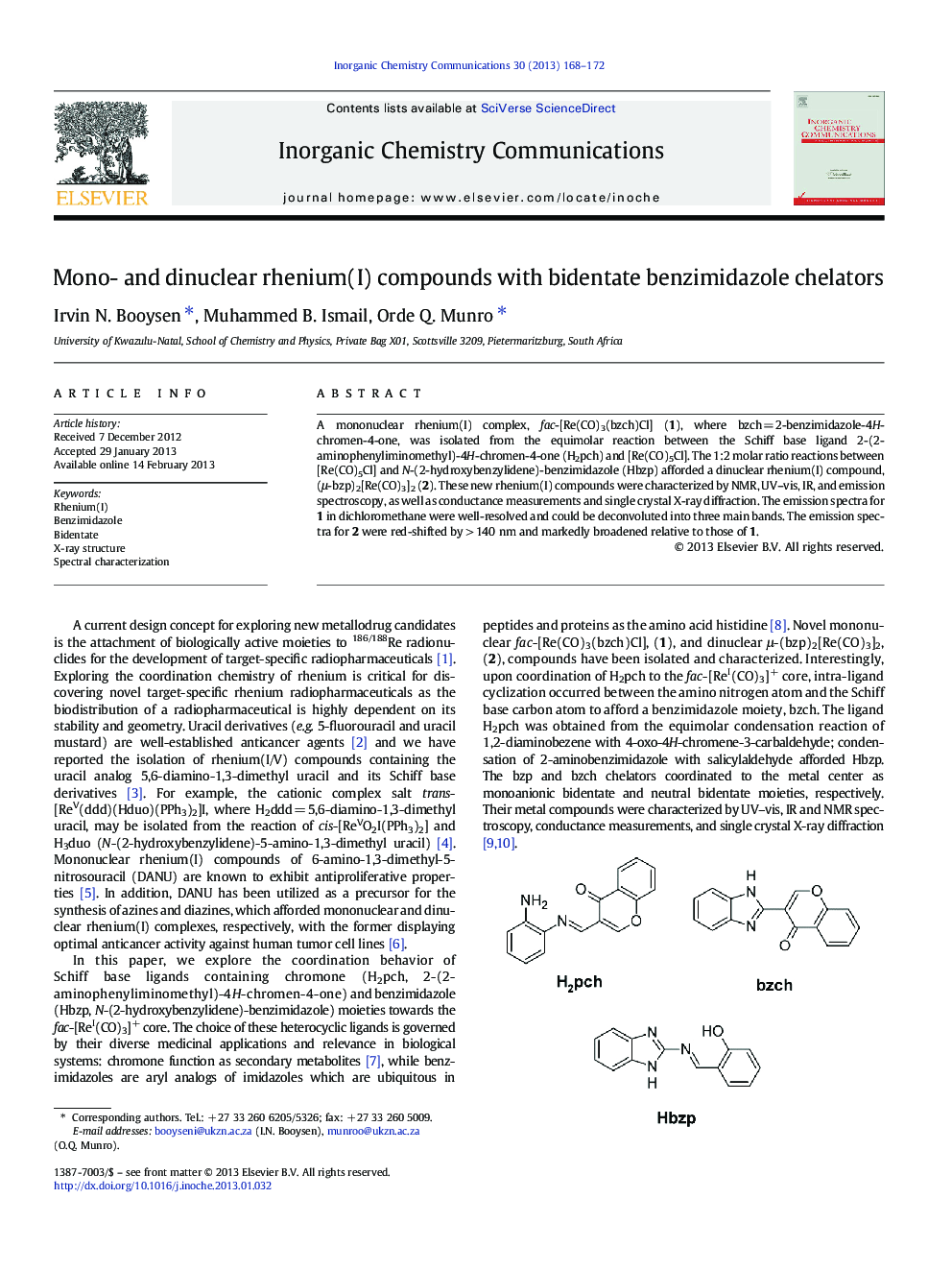| Article ID | Journal | Published Year | Pages | File Type |
|---|---|---|---|---|
| 1302006 | Inorganic Chemistry Communications | 2013 | 5 Pages |
A mononuclear rhenium(I) complex, fac-[Re(CO)3(bzch)Cl] (1), where bzch = 2-benzimidazole-4H-chromen-4-one, was isolated from the equimolar reaction between the Schiff base ligand 2-(2-aminophenyliminomethyl)-4H-chromen-4-one (H2pch) and [Re(CO)5Cl]. The 1:2 molar ratio reactions between [Re(CO)5Cl] and N-(2-hydroxybenzylidene)-benzimidazole (Hbzp) afforded a dinuclear rhenium(I) compound, (μ-bzp)2[Re(CO)3]2 (2). These new rhenium(I) compounds were characterized by NMR, UV–vis, IR, and emission spectroscopy, as well as conductance measurements and single crystal X-ray diffraction. The emission spectra for 1 in dichloromethane were well-resolved and could be deconvoluted into three main bands. The emission spectra for 2 were red-shifted by > 140 nm and markedly broadened relative to those of 1.
Graphical abstractThe coordination behavior of Schiff base ligands containing chromone (H2pch, 2-(2-aminophenyliminomethyl)-4H-chromen-4-one) and benzimidazole (Hbzp, N-(2-hydroxybenzylidene)-benzimidazole) moieties towards the fac-[ReI(CO)3]+ core is explored. Novel mononuclear fac-[Re(CO)3(bzch)Cl], (1), and dinuclear μ-(bzp)2[Re(CO)3]2, (2), compounds have been isolated and characterized.Figure optionsDownload full-size imageDownload as PowerPoint slideHighlights► Novel mono- and dinuclear rhenium(I) compounds ► Schiff base ligands containing chromone and benzimidazole moieties respectively ► Three distinct emission bands ► Crystallographically-required inversion symmetry
